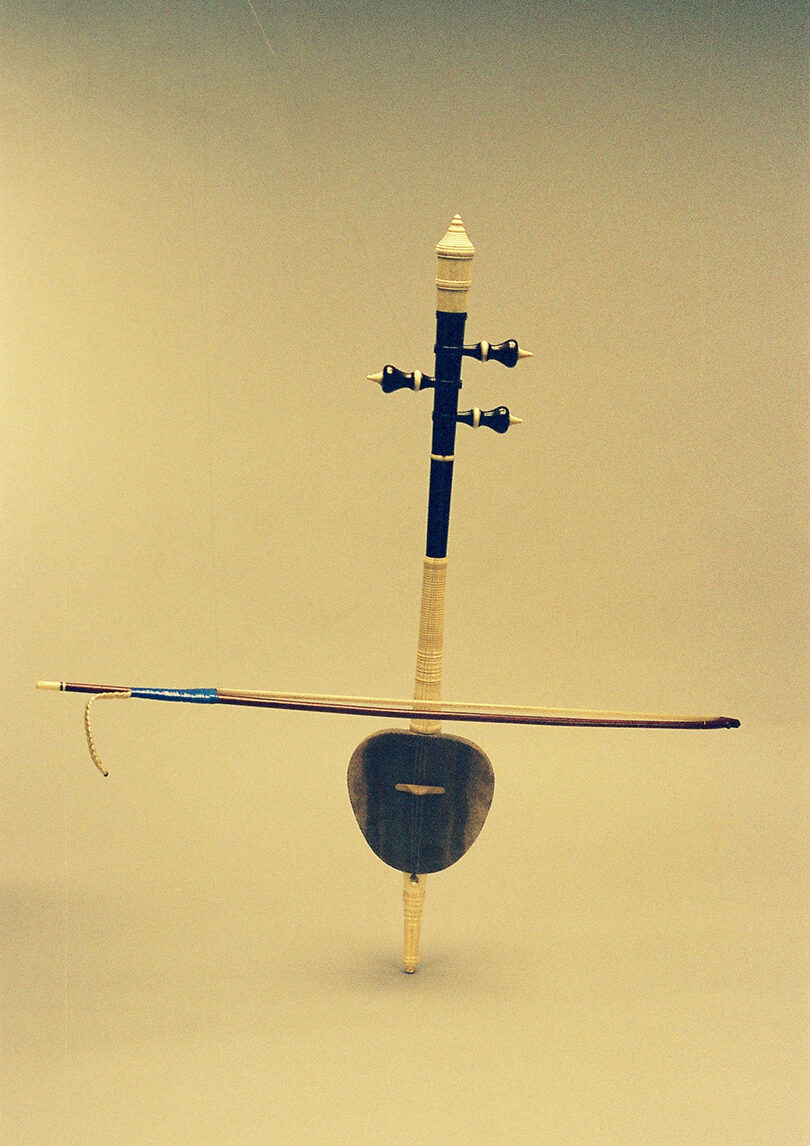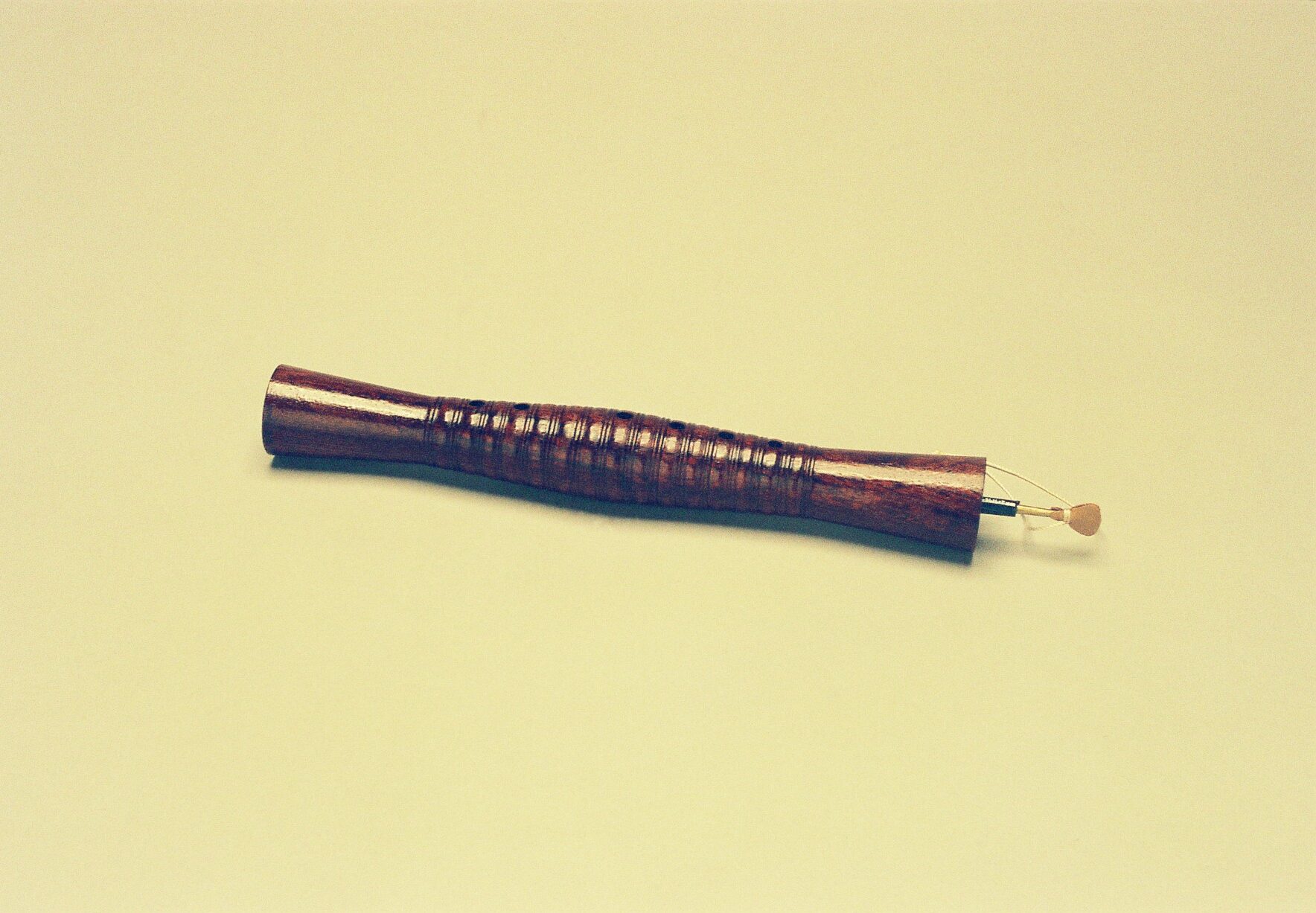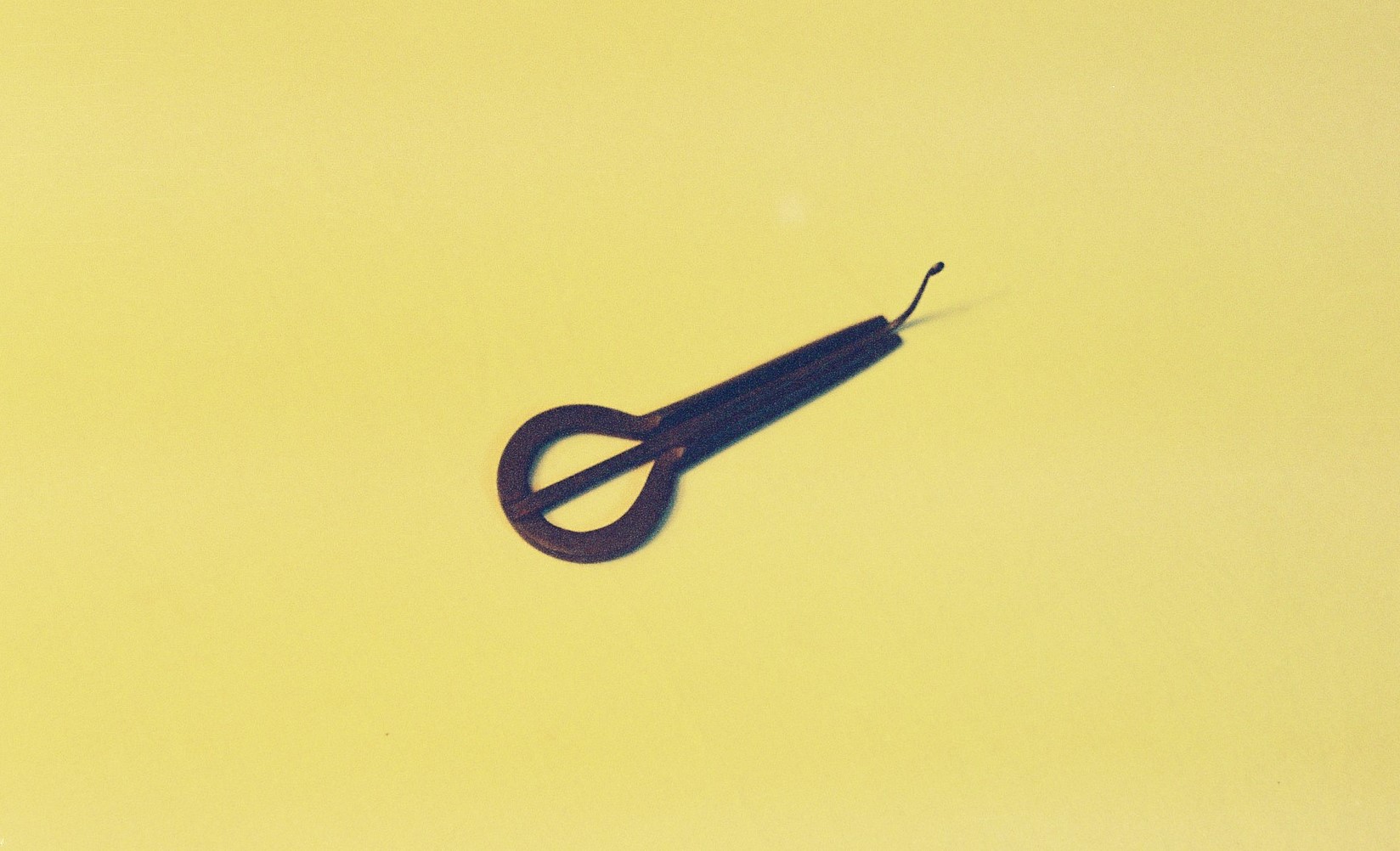ចំណាត់ថ្នាក់ឧបករណ៍តន្រ្តីរបស់ខ្មែរមានទម្រង់មួយជំហានឬមួយជ្រុង។ ជាទូទៅ តន្រ្តីករខ្មែរប្រើការបែងចែកបុរាណជាបីផ្នែក៖ ១.គ្រឿងដំ (គ្រឿងដំ/របៀបលេងឧបករណ៍) ២.គ្រឿងខ្សែ (គ្រឿងខ្សែ/ទ្រង់ទ្រាយ) ៣.គ្រឿងផ្លុំ (គ្រឿងផ្លុំ/របៀបលេងឧបករណ៍)។
អ្នកស្រី ពេជ សល់ (១៩៧០) បានធ្វើការបែងចែកឧបករណ៍តន្រ្តីក្នុងប្រទេសកម្ពុជាជាបួនចំណាត់ថ្នាក់ និងឱ្យឈ្មោះដូចតទៅ៖ ១.គ្រឿងខ្សែ ២.គ្រឿងផ្លុំ ៣.គ្រឿងពាសស្បែក និង៤. គ្រឿងគោះទង្គិចជាសំឡេង។
ដើម្បីយល់អំពីប្រព័ន្ធនៃចំណាត់ថ្នាក់ឧបករណ៍តន្រ្តីរបស់ខ្មែរ យើងត្រូវពិនិត្យមើល កិរិយាស័ព្ទដែលចង្អុលបង្ហាញពីសកម្មភាពនៃការបង្កើតនិងបន្លឺសំឡេង។ ក្នុងភាសាខ្មែរ គឺយើងប្រើពាក្យ «លេង»។ ជាមួយនឹងឧបករណ៍ទាំងអស់ក្នុងគ្រប់ចំណាត់ថ្នាក់កិរិយាស័ព្ទ «លេង» អាចប្រើបាន។ ទោះបីក្រុមនីមួយៗ ត្រូវបានភ្ជាប់ទៅនឹងកិរិយាស័ព្ទមួយ ដូចជាកិរិយាស័ព្ទ «ដំ» ឬ «វាយ» សម្រាប់ឧបករណ៍គ្រឿងគោះទង្គិចជាសំឡេង និងគ្រឿងពាសស្បែក។ កិរិយាស័ព្ទ «កូត» ឬ «ដេញ» សម្រាប់ឧបករណ៍គ្រឿងខ្សែ។ ឯកិរិយាស័ព្ទ «ផ្លុំ» សម្រាប់ឧបករណ៍គ្រឿងផ្លុំ។ ឧបករណ៍គ្រឿងដំ ឬក្រុមគ្រឿងដំ មានរួមបញ្ចូលនូវអ្វីដែលលោក ហ៊រន បស្តឹល (Hornbostel) និងលោក ហ្សាក់ (Sachs) ហៅថាឧបករណ៍គ្រឿងគោះទង្គិចជាសំឡេង និងគ្រឿងពាសស្បែក។ ពួកគេមិនបែងចែកក្រុមទាំងពីរនេះទេ ដោយសារឧបករណ៍ទាំងពីរប្រភេទនេះ ត្រូវបានតន្រ្តីករ «វាយ» ហើយតន្រ្តីករខ្មែរ ប្រើកិរិយាស័ព្ទ «ដំ» ឬ «វាយ» ក៏ដូចជាមានន័យថា «ដំ»ឬ «វាយ» ដូច្នោះដែរ។


តន្រ្តីករខ្មែរចាត់ថ្នាក់ឧបករណ៍កង្កួចឬអង្កួច ជាឧបករណ៍គ្រឿងផ្លុំ ដោយឧបករណ៍នេះមានអណ្តាត។ គេប្រហែលជាមានទំនោរទៅលើការប្រតិបត្តិ ជាងអ្នកធ្វើចំណាត់ថ្នាក់នៅលោកខាងលិច គឺដោយសារ បើគិតឱ្យសមហេតុផលទៅ «អណ្តាត» គឺនៅខាងក្នុងមាត់។ តន្រ្តីករខ្មែរ ហៅឧបករណ៍ប៉ីពក ប៉ីប្របុស និងស្រឡៃ ជាឧបករណ៍គ្រឿងផ្លុំទាំងអស់ ព្រោះវាមាន “អណ្តាត” ហើយឧបករណ៍ទាំងអស់នេះ ត្រូវគេដាក់នៅក្នុងមាត់រាល់ពេលសម្តែង។ លើសពីនេះទៅទៀត គេប្រើកិរិយាស័ព្ទ «ផ្លុំ» ដើម្បីបង្ហាញពីសកម្មភាពសម្តែងឧបករណ៍ទាំងអស់នេះ។
ឧបករណ៍តន្រ្តីមួយនៅកម្ពុជា គឺ «ទ្រសោ» ត្រូវបានគេស្គាល់ថាជា៖
១. គ្រឿងខ្សែ (ឧបករណ៍គ្រឿងខ្សែ)
២. គ្រឿងកូត (ឧបករណ៍គ្រឿងកូត)
៣. គ្រឿងមហោរី (ឧបករណ៍ប្រើក្នុងវង់ភ្លេងមហោរី)
ចំណែកឯ «រនាតឯក» វិញ ត្រូវបានគេបែងចែកចំណាត់ថ្នាក់ដូចតទៅ៖
១. គ្រឿងដំ (ឧបករណ៍គ្រឿងដំ/បចេ្ចកទេសសម្តែង)
២. គ្រឿងពិណពាទ្យ (ឧបករណ៍ពិណពាទ្យ/ប្រភេទវង់ភ្លេង)
៣. គ្រឿងមហោរី (ឧបករណ៍មហោរី/ប្រភេទវង់ភ្លេង)
៤. គ្រឿងនាំ (ឧបករណ៍នាំ/តួនាទី)
៥. គ្រឿងតន្រ្តីបុរាណ (ឧបករណ៍តន្រ្តីបុរាណ/ទម្រង់)
សៀវភៅមួយអំពីឧបកតណ៍តន្ត្រីនៅប្រទេសកម្ពុជា មានចំណាត់ថ្នាក់តន្ត្រីបួនក្រុមគឺ៖ គ្រឿងផ្លុំ គ្រឿងខ្សែ គ្រឿងដំ (ប្រភេទរនាត គង និងស្គរ) និងគ្រឿងផ្សេងៗ។ អ្នកស្រី ពេជ សល់ ក៏បានចាត់ថ្នាក់តន្ត្រីជាបួនក្រុមដែរ តែខុសគ្នាបន្តិចគឺ៖ គ្រឿងខ្សែ គ្រឿងផ្លុំ គ្រឿងដំ (ស្គរ) និងគ្រឿងដំ (ប្រភេទរនាតនិងគង)។
ប្រព័ន្ធតន្ត្រីនៅកម្ពុជា គឺមានឫសគល់ជ្រៅពាក់ព័ន្ធទៅនឹងវប្បធម៌និងកេរដំណែលខ្មែរ។ ទ្រឹស្តីនិងការអនុវត្តតន្ត្រីខ្មែរ រួមទាំងគំនិតនិងចំណាត់ថ្នាក់តន្ត្រីបានបន្តពីគ្រូទៅសិស្សនៅក្នុងរង្វង់និងបរិបទផ្ទេរចំណេះដឹងការសម្តែង។
ប្រព័ន្ធចំណាត់ថ្នាក់ឧបករណ៍តន្ត្រី ដែលប្រើរូបភាពឧបករណ៍ជាលក្ខណៈវិនិច្ឆ័យ គឺមិនបានយកកត្តាបទពិសោធន៍តន្ត្រីមកបញ្ចូលទេ។ នៅក្នុងអត្ថបទនេះ ខ្ញុំយកការអនុវត្តខ្មែរជាក់ស្តែងជាមូលដ្ឋាន ដោយមិនបង្ខំយកឧបករណ៍តន្ត្រីណាមួយទៅដាក់នៅក្នុងប្រព័ន្ធដើម្បីឱ្យស្របទៅតាមការគំនិតនិងសំយោគមតិរបស់ខ្ញុំនោះឡើយ។ ពោលគឺ វាជាកាតព្វកិច្ចរបស់យើងក្នុងការរកឱ្យឃើញការពិតរបស់វា។
ប្រព័ន្ធចំណាត់ថ្នាក់ឧបករណ៍តន្ត្រីរបស់លោក ហ៊រន បស្តឹល-ហ្សាក់ (Hornbostel-Sachs) ជាទស្សនៈទ្រឹស្តីមជ្ឈមណ្ឌល (Theory-centered concept)។ ចំណែកឯប្រព័ន្ធចំណាត់ថ្នាក់ឧបករណ៍តន្ត្រីខ្មែរគឺ ការសម្តែងមជ្ឈមណ្ឌល (Performance-centered)។ ពោលគឺខ្មែរបង្កើតប្រព័ន្ធខ្មែរក្នុងគោលបំណងបម្រើការអនុវត្តជាក់ស្តែងនិងការម្តែងតន្ត្រីសុទ្ធសាធ មិនមែនដើម្បីចំណាត់ថ្នាក់តន្ត្រីឬសារមន្ទីរវិទ្យាឡើយ។
តន្ត្រីករខ្មែរចាត់ថ្នាក់ឧបករណ៍តន្ត្រីរបស់គេទៅតាម៖
- បុគ្គលិកលក្ខណៈនិងការសម្តែងរបស់ឧបករណ៍តន្ត្រី គឺ៖ ខ្សែ គោះ និង ដំ
- តួនាទីរបស់ឧបករណ៍៖ ដឹកនាំឬចំណាត់ថ្នាក់ (ឯក)
- ស្ទីលតន្ត្រី៖ រត់ (រនាតរត់)
- វង់តន្ត្រី៖ បរិបទ អារក្ស អាពាហ៍ពិពាហ៍ ពិណពាទ្យ ឬមហោរី
- ស្ថានភាពគ្រប់គ្រងសកម្មភាពដោយ៖ មាត់ប្រើជាមួយនឹងគ្រឿងផ្លុំដូចជាកង្កួច (អង្កួច)
- ទំហំ៖ តូចឬធំ
- ប្រភេទ៖ ព្រះរាជទ្រព្យនៅក្នុងព្រះបរមរាជវាំង ឬប្រពៃណីនៅជាមួយនឹងប្រជាជន
- ជំនឿ៖ សាសនា សក្ការៈ ឬសាមញ្ញ
សំណួរមួយដែលយើងអាចសួរពីប្រព័ន្ធខ្មែរគឺថា តើខ្មែរយើងចាត់ថ្នាក់ឧបករណ៍តន្ត្រី ឬយើងគ្រាន់តែរៀបរាប់ជាបញ្ជី និងអធិប្បាយអំពីឧបករណ៍តន្ត្រីទាំងនេះ។ យើងនឹងនៅមានចំណាត់ឧបករណ៍តន្ត្រីនាពេលអនាគតទៀត ដរាបណាយើងនៅមិនទាន់មានការយល់ព្រមនិងទទួលស្គាល់ណាមួយជាសកលនៅឡើយ។ មកទល់នឹងបច្ចុប្បន្នកាលនេះ ប្រភពបស្ចឹមប្រទេសក្បោះក្បាយ ស៊ីជម្រៅជាច្រើនបានពិភាក្សាអំពីចំណាត់ថ្នាក់ឧបករណ៍តន្ត្រី ជាពិសេសពាក់ព័ន្ធនឹងនិយមន័យ។ ពិនិត្យទៅលើនិយមន័យទាំងនោះ យើងឃើញថាអ្វីៗដែលខ្ញុំសរសេរនៅទីនេះ គឺទាក់ទងនឹងទៅនឹងប្រភេទចំណាត់ថ្នាក់ឧបករណ៍តន្ត្រីរបស់លោក មែនតឹល ហ៊ុដ (Mantle Hood) ដែលមាននិយមន័យនិងអត្ថន័យខ្លឹមសារថា វិទ្យាសាស្ត្រនៃឧបករណ៍តន្ត្រី រូមបញ្ចូលទាំងការពិពណ៌នា បច្ចេកទេសសម្តែង ការបម្រើតន្ត្រី ការតុបតែងលម្អ ព្រមទាំងការគិតបញ្ចូលទាំងកត្តាសង្គមវប្បធម៌ទៀតផង៕





———————————–
KHMER ORGANOLOGY
Prior to this study, Khmer organology has been a single-step scheme. At the most general level, Khmer musicians use the traditional tripartite division:
- Kroeurng damm (percussion instruments/mode of playing)
- Kroeurng khsae (string instruments/physical aspect)
- Kroeurng phlomm (wind instruments/mode of playing)
(Keo et al. (1994))
Pich (1970) is the only Khmer writer, who classifies musical instruments of Cambodia in four categories and calls them:
- Kroeurng khsae (Chordophones)
- Kroeurng phlomm (Aerophones)
- Kroeurng peah sbaek (Membranophones)
- Kroeurng kuoh tungkich chea samleng (Idiophones)
To understand the Khmer system of classification of musical instruments, one must look at the verb that denotes the action of making the sound. In Khmer, it is leng or “to play.” With all instruments of all classes, the verb leng can be used. Although, each group is associated with a verb, i.e., damm or veay (to hit or to strike) for idiophones and membranophones, kaut (to bow) or denh (to pluck) for chordophones, and phlomm (to blow) for aerophones. The kroeurng damm or percussion group includes both what Hornbostel and Sachs called idiophone and membranophone. They do not differentiate the two, for both of them are stuck by the player, and Khmer musicians use the verb damm or veay, which means “to hit” or “to strike.”
Hornbostel and Sachs classified the jaw’s harp as an idiophone (1961). Jenkins and other classify the jaw’s harp as a linguaphone on the ground that it has a tongue (1970). Khmer musicians classify the instrument as an aerophone. Khmer musicians are perhaps more practical than many organologists in the West in that, logically, a tongue is inside the mouth. Khmer musicians refer to all reeds (free-reed, single-reed, double-reed, and quadruple-reed) as “tongues” or andat, because all of them, with no exception, are placed in the mouth when being played. Moreover, they use the verb phlomm, which means “to blow” to denote playing action on these instruments. Consequently, it is only logical to call them aerophones. To call them anything other than aerophones, the Khmer need to use a new and different verb for them.
A given instrument in Cambodia, for instance the tror so (two-stringed fiddle), could be known as:
- Kroeurng khsae (stringed instrument)
- Kroeurng kaut (bowed instrument)
- Kroeurng mohori (instrument used in the mohori ensemble)
Whereas the roneat aek (high-pitched xylophone) could be classified as:
- Kroeurng damm (stuck instrument/performance technique)
- Kroeurng pinn peat (pinn peat instrument/ensemble type)
- Kroeurng mohori (mohori instrument/ensemble type)
- Kroeurng noam (leading instrument/role)
- Kroeurng dantrey buran (traditional musical instrument/genre)
Keo et al. include four categories of musical instruments: wind, string, percussion (idiophones and membranophones), and other instruments (1994). Pich also classifies Khmer instruments into four main groups, but somewhat different: chordophones (plucked or bowed), aerophones (blown), membranophones (with a generic term skor preceding the names, hit or stuck), and idiophones (struck together) (1970: 16).
The Khmer system is connected deep down with the culture and heritage, from within instead of from without. Khmer music theory and practice, including ideas of organology, have been passed on from master to pupil during music lessons and performances. Musicians, however, do not usually take notice of this. It still holds true today that most Khmer musicians (except a few) still have not thought about it.
The classification systems that use physical aspects as criteria, totally ignore the musical experience. I view the Khmer system based on the existing musical practice, and do not force the instruments to fit the system to suit my study. Instruments themselves contain a system. It is our task to discover it, and not to construct systems to suit our specific research interests.
The Hornbostel-Sachs system was a theory-centered concept, whereas the Khmer is a performance-centered one. The Khmer system was created to serve neither organology nor museology, but practical use within music making.
Playing technique associated with music and therefore affects the musical style, which in turn gives way to different classifications. Khmer musicians classify their instruments according to:
- Physical and playing characteristics (string, striking, beating)
- Role (leading/aek)
- Musical style (running/roneat rut)
- Ensemble (context/arakk, kar, pinn peat, mohori)
- Controlling action (mouth with aerophones/jaw’s harp)
- Size (tauch, thomm)
- Status (court, folk)
- Belief (religious, sacred, secular)
អត្ថបទដោយ៖ បណ្ឌិត សំ សំអាង






